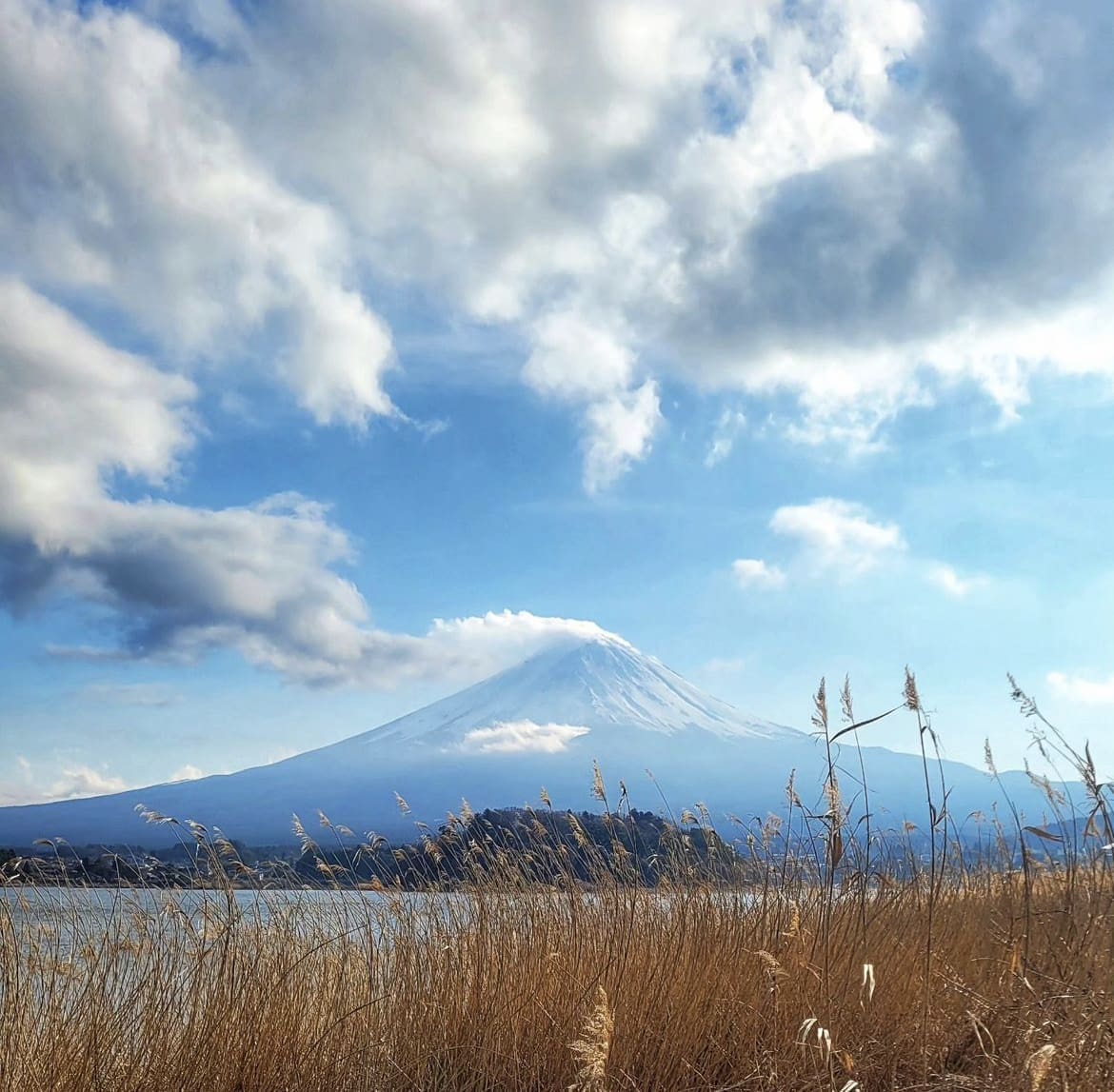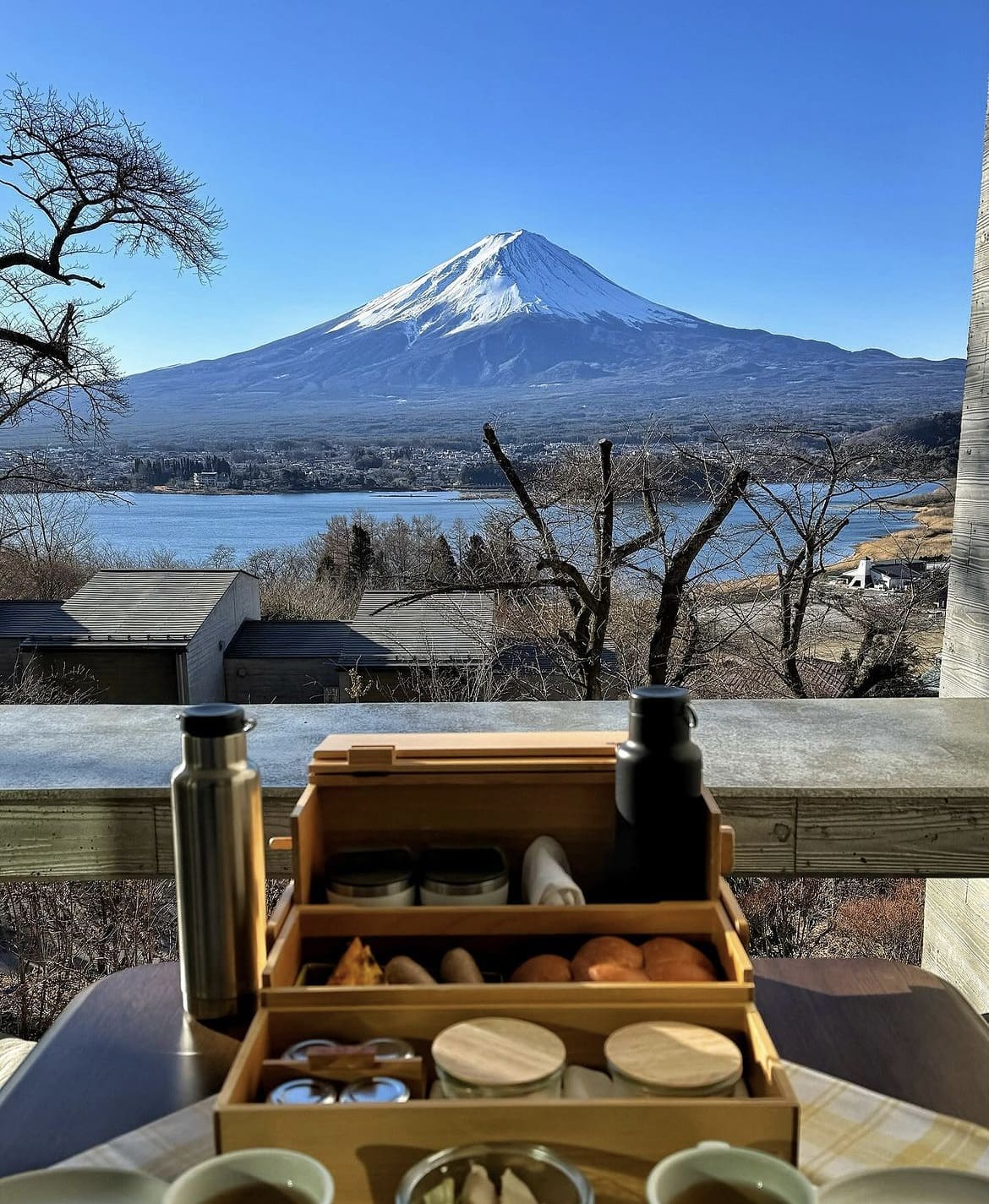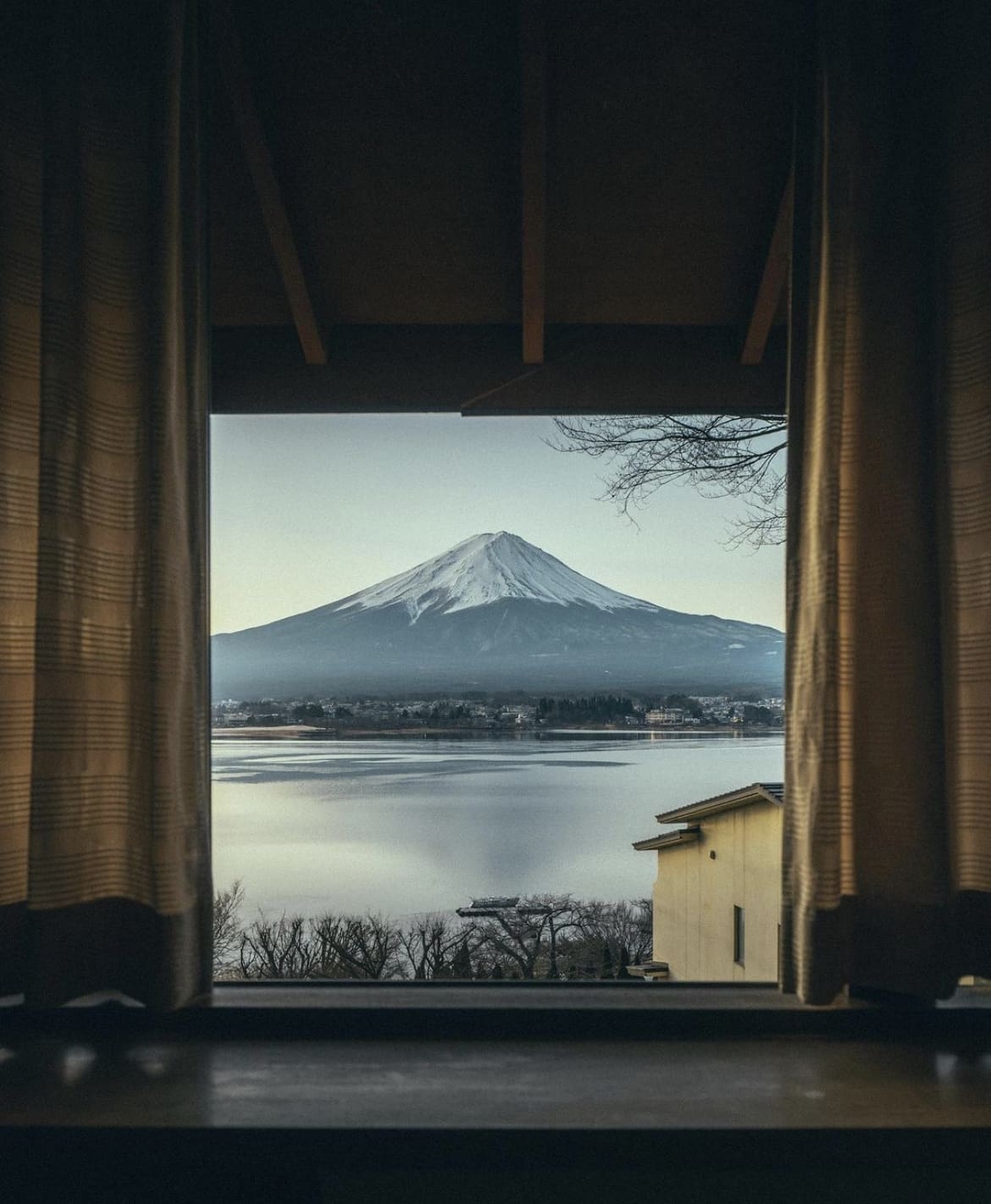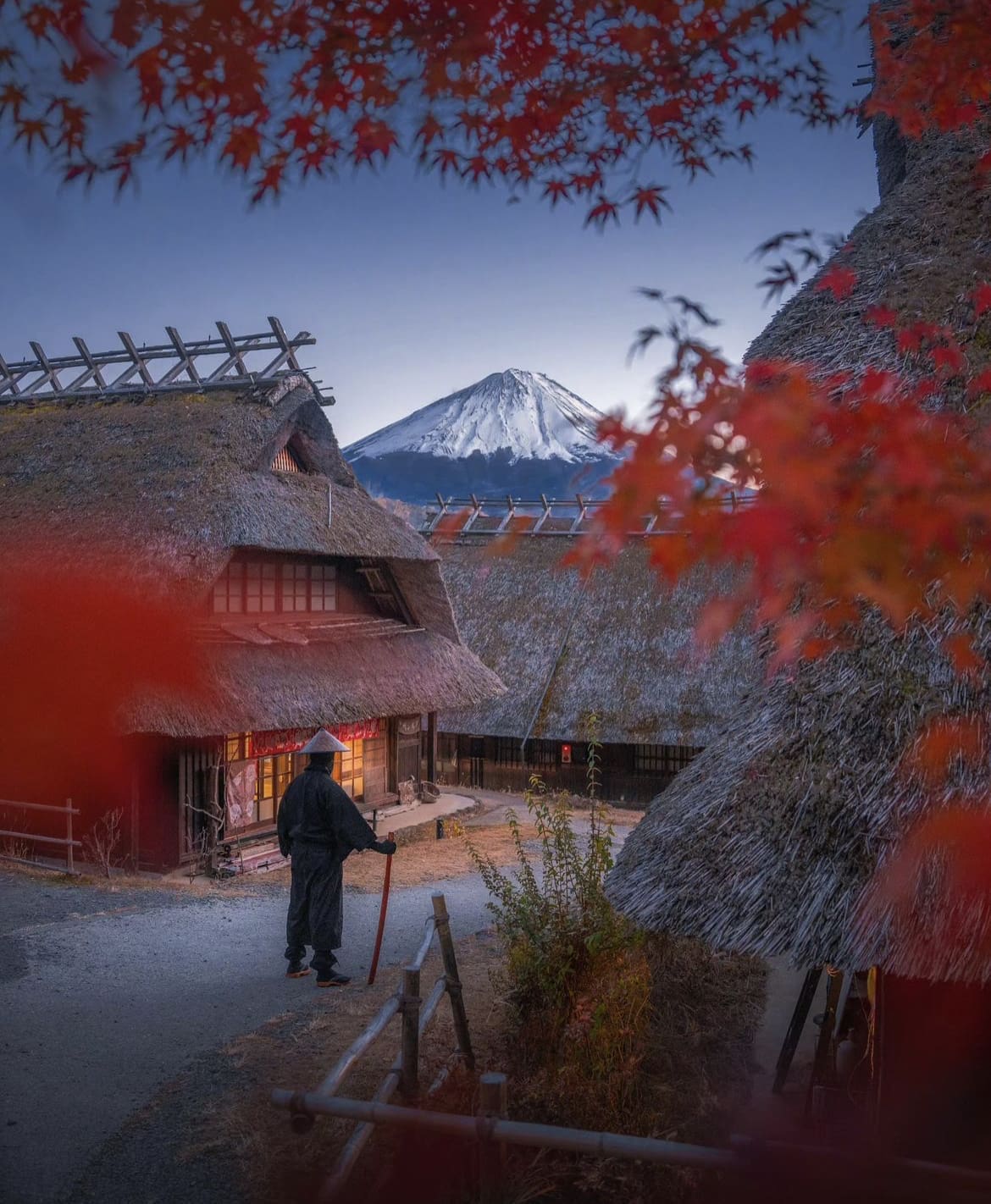So, you’ve got it in your head to climb Mount Fuji? Welcome to the club of dreamers, adventurers, and slightly insane individuals who think scaling a 3,776-meter tall volcano is a fun way to spend a weekend. Mount Fuji isn’t just a mountain; it’s a beacon for artists, a challenge for climbers, and a spiritual journey for many.
Catching the Fuji Fever
If you’re looking for a story to tell that doesn’t start with “This one time, at a bar…,” you’re in the right place. Climbing Fuji is about pushing your limits, catching a sunrise that’ll make your heart forget to beat, and, yes, bragging rights. So, buckle up, and let’s get into why you and Fuji are about to become besties.
Why Climb Mount Fuji?
Why climb Mount Fuji? Well, why binge-watch another series when you can have a real-life adventure? Climbing Fuji is about more than just conquering Japan’s highest peak; it’s about conquering yourself. The mountain holds a special place in Japanese culture, symbolizing beauty and perseverance, and let’s be real, it looks awesome on any social media feed.
Imagine this: you’re standing on the summit, the world stretching out beneath you, painted in the soft light of dawn. That, my friend, is why you climb. Plus, the climbing stories you’ll have will beat any fish-that-got-away tale. Whether it’s the struggle, the camaraderie, or the sheer euphoria of reaching the top, your Fuji story will be one for the books.

Deciding When to Go: Best Time to Climb Mount Fuji
Timing is everything, and when it comes to Fuji, it’s not just about when you’ll get the best Insta-worthy shots. The official climbing season is early July to early September, when the weather is less likely to throw a tantrum. This is when the trails and mountain huts are open, and the mountain is buzzing with energy (and, yes, other climbers). But let’s talk weather for a sec—because nobody wants their Fuji experience to be a wet, cold, and miserable affair.
The best time for that iconic sunrise climb? Late July through August. You’ll get clearer skies, warmer nights (well, as warm as nights get at 3,776 meters), and the best chance of a sunrise that’ll make you feel things. Just remember, with great timing comes great crowds. If you’re looking to avoid the worst of the pack, aim for a weekday climb or the edges of the season. Just, you know, be prepared for a bit chillier adventure and maybe a bit more solitude than you bargained for.

Preparing for Your Climb: The Essentials
Before you lace up those hiking boots and declare yourself ready for Mount Fuji, let’s talk prep work. Climbing Fuji isn’t like your average Sunday hike; it requires some serious prep, both mentally and physically. First, you’re going to want to get in shape. And no, your daily sprint to catch the bus doesn’t count. We’re talking cardio, strength training, and maybe even some practice hikes. Trust me, your legs will thank you later.
Next up, packing. This isn’t the time to embrace your inner minimalist. You’ll need gear for all conditions – think layers, waterproofs, and a headlamp (because stumbling around in the dark is fun for exactly no one). And don’t forget snacks. Lots of snacks. You’re burning a crazy amount of calories, so pack like a bear preparing for winter.
And permits! Yes, you need one. It’s not just a formal nod; it’s for your safety. The mountain gods and the Japanese authorities want to make sure everyone who goes up comes down in one piece. So, make sure you’ve got your paperwork sorted. It’s a bit of a buzzkill, but less of a buzzkill than being turned away at the base.

Choosing Your Path: Mount Fuji Hiking Trails
Alright, it’s time to choose your own adventure. There are four main trails to the summit: Yoshida, Subashiri, Gotemba, and Fujinomiya. Each has its own flavor, challenges, and bragging points.
- Yoshida Trail: The most popular kid at the Fuji climbing party. It’s got plenty of huts, which means plenty of opportunities for rest (and snacks). It’s your best bet for a first-time climb, offering a mix of challenge and camaraderie.
- Subashiri Trail: Want to merge a bit of solitude with the social? Subashiri’s your trail. It joins up with Yoshida near the summit, so you get the best of both worlds. Plus, it’s got some killer forest sections early on.
- Gotemba Trail: If you love the idea of a leg-destroying climb and descending through volcanic ash, step right up. Gotemba’s the longest and least crowded route, perfect for masochists and those seeking solitude.
- Fujinomiya Trail: The shortest route to the summit means it’s steep. Like, really steep. But it also offers some of the most stunning views, and it’s got a good number of huts. It’s a solid choice if you’re confident in your fitness and want a bit of a challenge.
Choosing your trail is like choosing your character in a video game; each has its own strengths and weaknesses. Consider your fitness level, your desire for solitude (or company), and how much you’re willing to push yourself.
Gear and Supplies: Packing Right
Now, let’s talk gear. Climbing Mount Fuji isn’t a walk in the park. You need to pack for success, which means preparing for all four seasons – sometimes all in one day. Here’s your quick and dirty packing list:
- Clothing: Layers are your best friend. Start with moisture-wicking base layers, add insulating layers, and top it off with a waterproof and windproof jacket and pants. Don’t forget your hat and gloves; it gets chilly up there.
- Footwear: Good hiking boots are non-negotiable. Break them in beforehand unless you enjoy blisters.
- Headlamp: For those early morning or late-night hikes. Plus, it’s your hands-free ticket to navigating in the dark.
- Sun protection: Sunglasses, sunscreen, and a hat. The sun is no joke at altitude.
- Hydration: Water is heavy, but dehydration is heavier (figuratively speaking). Bring plenty, and consider a filter or purification tablets since there are water sources along the way.
- Snacks: High-energy, lightweight snacks are the way to go. Think nuts, energy bars, and chocolate. Yes, this is the one time when chocolate is officially on the gear list.
- Camera: Remember those photography tips for Mount Fuji I mentioned? A good camera can help you capture the magic. Even if it’s just your smartphone, make sure you have a way to take those brag-worthy shots.
Packing right is half the battle. The right gear won’t just make your climb more comfortable; it’ll make it safer. So, invest in good equipment, pack wisely, and remember – it’s about the journey, not just the summit. Plus, think of the epic snack breaks you’ll have.

On the Day: Starting Your Climb
The day has arrived. You’re standing at the foot of Mount Fuji, looking up and thinking, “What have I gotten myself into?” But in a good way. Before you take that first step, let’s talk logistics. Getting to Fuji isn’t as hard as you might think, with options ranging from buses to trains from Tokyo. It’s all about that “Geographical Context” – knowing where you are and where you need to be.
Your journey starts at one of the four trailheads: Yoshida, Subashiri, Gotemba, or Fujinomiya. Each has its own vibe and, importantly, its own base station with facilities. Last-minute bathroom break? Check. Snacks? Double-check. Now, it’s just you and the mountain. Start early, especially if you’re aiming for that sunrise summit. It’s a long, tough climb, but as they say, the journey of a thousand miles begins with a single step. Or in this case, the climb of 3,776 meters begins with a slightly breathless first hour.
Safety First: Navigating the Ascent
Here’s the deal: climbing Mount Fuji is no joke. You’re tackling a serious altitude, and the mountain demands respect. Mount Fuji safety tips aren’t just nice-to-haves; they’re essentials. Stay hydrated, pace yourself, and listen to your body. Altitude sickness can sneak up on the unwary climber, so know the signs and act accordingly.
Stick with your group or, if you’re solo, keep close to other climbers. There’s safety in numbers, and it’s always good to have someone to share the “Why did we think this was a good idea?” moments with. And remember, the mountain isn’t going anywhere. If the weather turns bad or you’re not feeling it, there’s no shame in turning back. The goal is to enjoy the journey, not just to tick a box.

The Summit Experience: Reaching the Top
You’ve made it. After hours of climbing, you’re at the summit of Mount Fuji, and the view is everything you hoped it would be and more. The world stretches out below you, a patchwork of cloud and land, with the early morning sun painting everything in hues of gold and pink. This is the moment you climbed for, the Mount Fuji sunrise climb that you woke up in the middle of the night for. Take it in. This is your time.
But as you stand there, remember the environmental considerations for climbing Mount Fuji. This mountain is a treasure, and it’s up to all of us to keep it that way. Stick to the paths, take your trash with you, and respect the sacredness of the site. It’s these small acts that ensure future generations can have the same incredible experience you’re having now.
Reaching the summit of Mount Fuji is an accomplishment that you’ll carry with you forever. It’s a testament to your determination, your courage, and your willingness to embrace the adventure. Soak up the sunrise, snap those photos, and then, when you’re ready, begin the journey back down. The mountain has given you its best; now it’s time to carry that experience back into the world below.
After the Climb: Recovery and Reflection
You did it. You’re back at the base, legs jelly, heart full, camera roll overflowing. But as any climber will tell you, the journey doesn’t end when you step off the mountain. Now’s the time for recovery and reflection. First things first: treat yourself to a good meal. You’ve earned those calories back tenfold. Then, consider a dip in one of the many hot springs around Fuji. Your muscles will thank you.
But it’s not just about physical recovery. Take some time to reflect on your climb. What did you learn about yourself? What moments will you cherish? Climbing Fuji is as much a mental challenge as a physical one, and the lessons you take away can be life-changing.

Where to Stay: Mount Fuji Accommodations
Whether you’re looking to crash pre-climb or unwind post-adventure, there are plenty of Mount Fuji accommodations to suit every style and budget. From cozy mountain huts on the trail to luxurious hot spring resorts at the base, there’s something for everyone. If you’re climbing during peak season, book early to avoid disappointment. And remember, staying near the mountain means you’re perfectly positioned to explore everything the area has to offer, from serene lakes to stunning forests.
Making It Happen: Booking Your Trip
Feeling inspired? It’s time to make your Fuji dreams a reality. If you’re not a fan of solo adventures or detailed planning, consider one of the many Mount Fuji climbing tours available. They take the guesswork out of the equation and often include guides, gear, and even accommodations. Just remember to check what’s included and any additional costs.
For the independents out there, start by booking your flight to Tokyo and then plan your journey to Fuji. Whether you’re going solo or with friends, the key is to plan ahead. That means flights, accommodations, and making sure you’ve got all the gear you need. And don’t forget to check the climbing season dates and weather conditions before you go.

FAQs: Climbing Mount Fuji
Got questions? We’ve got answers. Here are a few “Mount Fuji climbing FAQs” to get you started:
- Do I need a guide? Not necessarily, but if you’re a first-timer or prefer the security of a guide, it’s a good option.
- Can I climb Fuji in one day? It’s possible, but not recommended. Splitting the climb over two days allows for acclimatization and enjoying the sunrise.
- What should I do in case of bad weather? Always check the weather forecast before your climb. If conditions turn bad, it’s safer to postpone or turn back.
Embrace the Challenge
Climbing Mount Fuji is more than just ticking off a bucket list item; it’s a journey that tests your limits, teaches you about yourself, and leaves you with memories that last a lifetime. Whether you’re drawn by the challenge, the beauty, or the chance to stand atop Japan’s most iconic peak, the experience is unparalleled.
As you plan your adventure, remember that Fuji isn’t just a mountain; it’s a symbol of perseverance, a witness to centuries of pilgrims and adventurers before you. So, embrace the challenge, respect the mountain, and carry the spirit of your climb with you long after you’ve descended.
